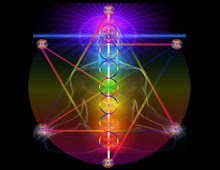
Meditation on the Great Perfection
by Kyhentse Rinpoche
When performing the meditation practice one should develop the feeling of opening oneself completely to the whole universe with absolute simplicity and nakedness of mind, ridding oneself of all protecting barriers.
The whole universe is open and unobstructed, everything mutually interpenetrating. Seeing all things nakedly, clear and free from obscurations, there is nothing to attain or realize. The nature of things naturally appears and is naturally present in time-transcending awareness; this is complete openness.
When performing meditation practice one should think of it as just a natural function of everyday living, like eating or breathing, not as a special, formal event to be undertaken with great seriousness and solemnity. One must realize that to meditate is to pass beyond effort, beyond practice, beyond aims and goals, and beyond the dualism of bondage and liberation.
Meditation is always perfect, so there is no need to correct anything. Since Everything that arises is simply the play of the mind, there are no "bad" meditation session and no need to judge thoughts as good or evil. Therefore one should not sit down to meditate with various hopes or fears about the outcome: one just does it with no self-conscious feeling of "I am meditating" and without attempting to control or force the mind, and without trying to become peaceful.
If one finds that one is going astray in any of these ways, one should stop meditating and simply rest and relax for awhile before resuming.
One should put an end to conceptions about meditation and free oneself from memories of the past. Each moment of meditation is completely unique and full of potentiality of new discovery so one is incapable of judging meditation by past experience or by theory.
Simply plunge straight into meditation at this very moment with your whole mind, and be free from hesitation, boredom, or excitement.
When meditating it is traditional and best, if possible, to sit cross-legged with the back erect but not rigid. However, it is most important to feel comfortable, so it is better to sit in a chair if sitting cross-legged is painful.
One's mental attitude should be inspired by the three fundamental aspects, whether the meditation is with or without form, and it may often prove desirable, if not essential, to precede a period of formless meditation by a period of meditation with form.
-First, let the mind follow the movement of the breath, in and out, until it becomes calm and tranquil.
-Then increasingly rest the mind on the breath until one's whole being seems identified with it.
-Finally become aware of the breath leaving the body and going out into space, and gradually transfer the attention from the breath to the sensation of spaciousness and expansion.
By letting this final sensation merge into complete openness, one moves into the sphere of formless meditation.
Sometimes in meditation one may experience a gap in one's normal consciousness, a sudden and complete openness. This experience arises only when one has ceased to think in terms of meditation and the object of meditation. It is a glimpse of reality, a sudden flash that occurs infrequently at first, and then, with continued practice, more and more frequently. It may not be a particularly shattering or explosive experience at all, just a moment of great simplicity.
Do not make the mistake of deliberately trying to force these experiences to recur, for to do so is to betray the naturalness and spontaneity of reality.








No comments:
Post a Comment